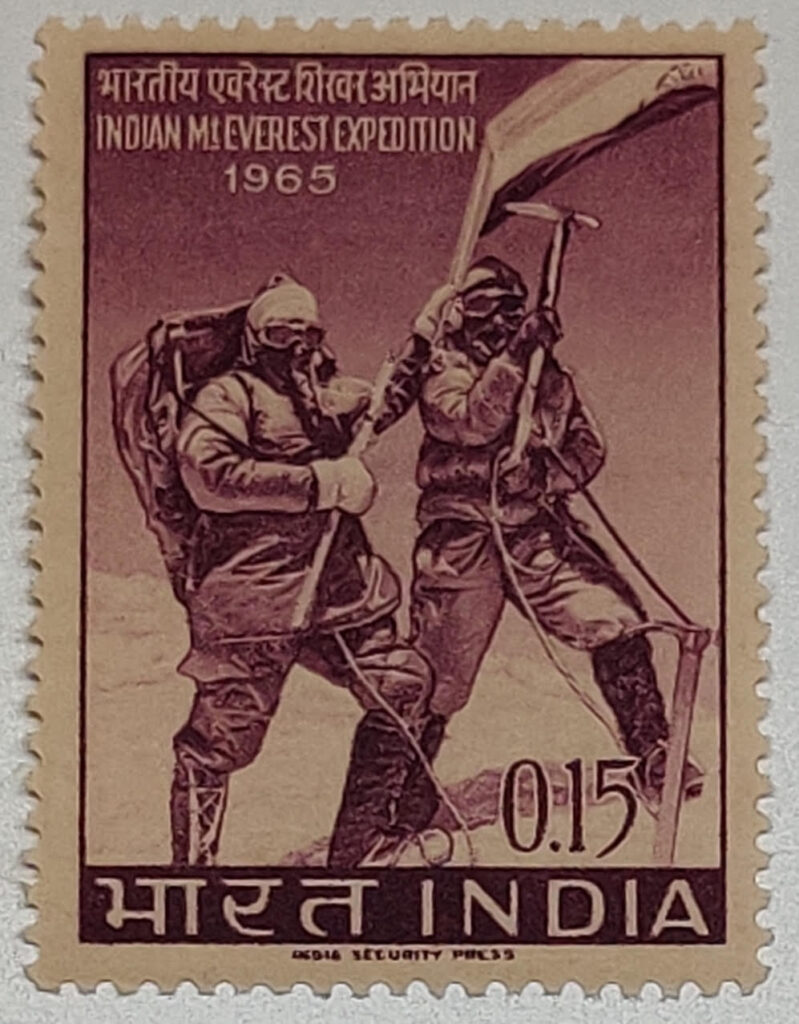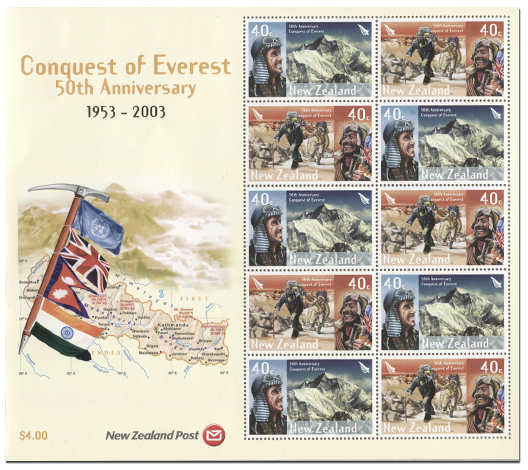
People | June 6, 2019
In case you haven’t seen the news recently, let’s catch you up on the news for Nepal. This climbing season, more climbers than ever before are attempting to summit Mount Everest, the world’s highest mountain. This is creating a logjam of people near the summit…with deadly results. So far, eleven climbers have died this season in their quest to stand at the top of the world. Everest is a lot more crowded than it was this time 66 years ago when Edmund Hillary and Tenzing Norgay became the first documented people to stand at the top of Mount Everest. Let’s look back on their historic climb to learn what you didn’t know about Sir Edmund Hillary, Tenzing Norgay, and the first trip to the top of the world.
“Because it is there”
For mountain climbers, Everest is the pinnacle. It is a 29,029-foot tall beast of a mountain that pierces the upper atmosphere. It is taller than most jets fly at cruising altitude. Cradled in between Nepal and Tibet, Mount Everest is called Chomo-Lungma in the Tibetan language, a term that means “Mother Goddess of the Land.” The British named it after Sir George Everest, a British surveyor of Asia in the 19th century. The Brits have long had a fascination with the mountain and a strong desire to reach its peak. George Leigh Mallory was a member of the 1921 British expedition, the first to attempt to summit Everest. When asked why he wanted to climb the mountain, Mallory responded, “Because it is there.”
A race to the top
When Edmond Hillary and Tenzing Norgay reached the top of Everest in the morning of May 29, 1953, they not only accomplished what no human had done before, but they beat out their rivals, the Swiss. Just a year earlier, it looked as though a team of Swiss mountaineers were going to beat them to the top. Led by Raymond Lambert, a superstar of the Swiss alpine climbing arena, the team had blazed a path up the treacherous Lhotse Face on route to the summit. Lambert and his Sherpa guide, Tenzing Norgay, made it as high as 28,210 feet before they were forced to turn back. At the start of the 1953 climbing season, the British team hired Norgay away from the Swiss and planned their push to the top and recruited the best British climbers, including those from the British Commonwealth of New Zealand.
Who was Tenzing Norgay?
…Born on May 29, 1914, (or May 15 (?), in Solo Khumbu, Nepal (near Mount Everest), and later migrated to Dharamshala, India), Norgay celebrated his 39th birthday atop Everest (In fact, he knew he was born in May but not the date and hence decided to celebrate his birthday on the day he climbed Mount Everest subsequently). The Nepali-Indian mountaineer was not only in excellent physical condition, but he had the can-do attitude to push through the obstacles on his way to the top. (He had been part of several noteworthy Himalayan expeditions earlier).
Who was Edmund Hillary?
Edmund Hillary was a New Zealand bee-keeper. The 33-year old was a fitness and adrenaline junkie. He had climbed most of the ice peaks in New Zealand — good training for Everest — and had set his sights on the Himalayas. In fact, 1953 marked Hillary’s fourth Himalayan expedition and the British mountaineering team knew he was the best-equipped person to push through Everest’s ‘death zone’ and make it to the summit. For his historic accomplishment, Queen Elizabeth knighted him, Sir Edmund Hillary.
Are Sherpas super-human?
Sherpas, an ethnic group living in the mountainous regions of Nepal, are so well-suited for the high elevations and thin oxygen that they have been called super-human. Now geneticists think they have proven this. A 2010 study by UCLA showed that Sherpas exhibit at least 30 genetic markers that make them ideal for living in high-altitude regions. One of these genetic factors is a gene called EPAS1, or the ‘super-athlete gene’. This gene allows the Sherpa’s body to regulate the production of haemoglobin, which in turn, makes the body use oxygen more efficiently.
News of the ascent was seen as a lucky omen
Although Hillary and Norgay reached the summit of Everest on May 29, 1953, the news of their accomplishment didn’t reach England until the morning of June 2, 1953 — the day of Queen Elizabeth II’s coronation. The British people had two reasons to celebrate and felt an enormous sense of pride that their country’s expedition was the first to reach the top of the world. They viewed it as a lucky omen that the reign of Queen Elizabeth II would be a long and prosperous one.
More at https://historydaily.org/conquering-everest-what-you-didnt-know-about-sir-edmund-hillary-tenzing-norgay-and-the-first-trip-to-the-top-of-the-world
The dramatic photograph of Tenzing Norgay on the summit of Everest went around the world. Later people wondered why there was no similar picture of Hillary. The explorer wrote that he had not asked the Sherpa to reciprocate because “as far as I knew, he had never taken a photograph before, and the summit of Everest was hardly the place to show him how.”
…Hillary climbed 11 summits in the Himalayas, all above 6,000 metres.
Hillary’s comment about his Everest adventure: “We didn’t know if it was humanly possible to reach the top of Mt. Everest. And even using oxygen as we were, if we did get to the top, we weren’t at all sure whether we wouldn’t drop dead or something of that nature.”
In the later fifties, Hillary was invited to participate in the first mechanised expedition to the South Pole. On January 4, 1958, he reached the Pole with just enough petrol for another 20 miles.
When he died of heart failure, on 11 January 2008, his death was recognised by the lowering of flags to half-mast on all government and public buildings in New Zealand and at Scott Base in Antarctica.
His son Peter Hillary, inspired by his father, has become a well-known climber in his own right. In 1990, he stood on the summit of Mount Everest with the same view his father had seen 37 years earlier.
More at http://pawprints.kashalinka.com/anecdotes/sir-edmund-hillary

Image courtesy: virtualnewzealandstamps.blogspot.com
